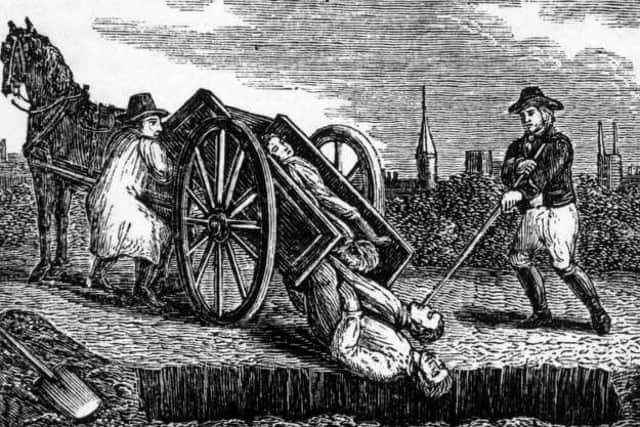Ian Scott: The original '˜beast from the east' was a killer


Most towns and villages suffered and Falkirk was among them despite strenuous efforts to keep the ‘‘pestilence’’ at bay. East coast ports like Leith – and Bo’ness – were the gateways into Scotland and the burgh authorities had been well aware of the danger of the ‘‘beast from the east’’ and had given the order to shut the town gates and stop outside workers from entering without an official pass. It was all in vain. In the autumn of 1644 the first infected person managed to get in and, although Falkirk had a fairly small population, the people were crowded together in narrow closes and wynds off the High Street creating ideal conditions for disease to spread. As the numbers of victims increased it was all hands to the pump to deal with those who were infected and try to stop the spread.
There was a swift response from local leaders both civil and religious. In December James Livingston, the Earl of Callendar, wrote to his Falkirk bailie ordering immediate action to close up some houses and guard others and to ensure that those confined are supplied with ‘‘meal and coals’’. Since contaminated clothing had to be destroyed, the Earl ordered his men to “try what coarse cloath can be gottin in Falkirk at two shillings or half a croune ane ell, and buy it, and cause all the taylzeours to fall a-making of four tailed coats and breiches.” Special workers called ‘‘smeikers’’ and ‘‘clengars’’ used smoke from burning coals to fumigate and clean the suspect houses. The church was less practical, seeing the arrival of the pestilence as a punishment from God and days of prayer and fasting were ordered. Special celebrations were cancelled because “banquittas, brydellies and nicht wakes are not decent when God is offendit with the land”.
Advertisement
Hide AdAdvertisement
Hide AdThis had the advantage of halting large scale gatherings of people which would have assisted the spread of contamination. Later on weddings were allowed but only six guests on each side were permitted. The plague stayed in Falkirk for almost three years but we have no record of how many people died though it must have been dozens. Because of the fear that the pestilence would escape from the graves of victims when a lair was re-opened, the church decided that the dead should be buried outside the town. They were carried to the common land of Graham’s Muir and buried in what were known afterwards as the pest graves. A stone wall was built round the spot in 1647 to prevent cattle from eating the grass in case their milk would pass on the disease. This remained the case until the early 19th century when a man called Dunn decided to knock the walls down and let the cows in to graze. Nothing bad happened and not many years later Dr John Meek acquired the land which was later used for housing. However the name ‘‘pest graves’’ continued to appear on maps and we can pinpoint the place fairly accurately as the junction of George Street and Russel Street. I don’t suppose the folk who live there now would thank me for suggesting that we erect a plaque in their gardens!